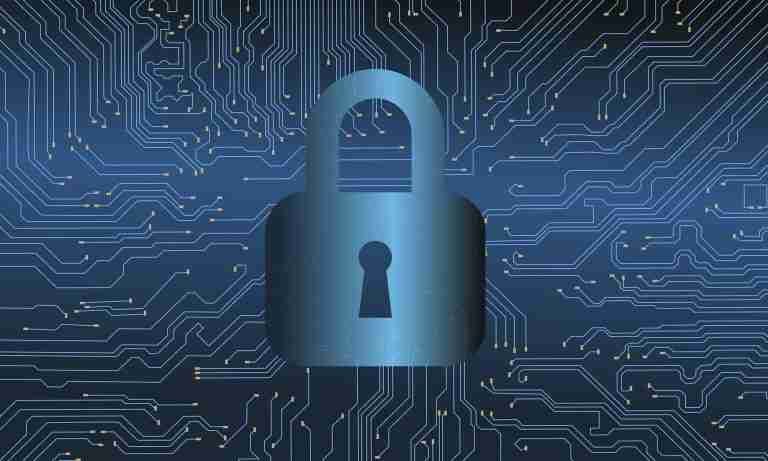The Internet of Things (IoT)
The Internet of Things (IoT) refers to the interconnected system of devices and objects that collect and exchange data through the internet. This remarkable concept has transformed the way we interact with the world, facilitating seamless communication between everyday items, systems, and individuals. Historically, the roots of IoT can be traced back to the early days of networked devices. In the 1980s, the idea of connecting various appliances to the internet took shape, but it was not until the late 1990s that the term “Internet of Things” was popularized. This period ushered in a technological evolution as advancements in wireless communication and sensor technology enabled the connection of an ever-increasing number of devices.
Read More
By the early 2000s, the proliferation of smart devices led to an exponential growth in IoT applications, ranging from smart home technology to industrial automation. The convergence of various technologies such as cloud computing, big data analytics, and artificial intelligence further enhanced the capabilities of IoT, allowing devices to process vast amounts of information with greater efficiency. Today, IoT encompasses billions of connected devices, providing rich data streams that can be leveraged to optimize operations and enhance user experiences across various sectors, including healthcare, transportation, agriculture, and manufacturing.
In the current technology landscape, the significance of IoT cannot be overstated. It is reshaping industries by enabling smarter resource management, enhancing decision-making, and improving productivity. As IoT continues to advance, it is fostering innovations that simplify daily activities and streamline processes. This interconnected network of devices is not just a trend; it signifies a paradigm shift toward a more efficient and automated future, where connectivity and intelligent systems play pivotal roles in everyday life.
How IoT Works
At the core of the Internet of Things (IoT) is a network of interconnected devices that communicate and exchange data. This complex ecosystem relies on several key components to function effectively. First and foremost are sensors, which act as the eyes and ears of IoT devices, gathering real-time data from their surroundings—including temperature, humidity, motion, and light conditions. These devices can range from household items like smart thermostats to industrial machinery equipped with specialized sensors.
Connectivity is another crucial element of IoT systems. Devices utilize various communication protocols to transfer collected data to the cloud or other devices. Popular protocols include MQTT, CoAP, and HTTP, each designed for specific use cases and data requirements. The choice of protocol can significantly influence the efficiency and responsiveness of the entire system, as it dictates how quickly and reliably devices can share information.
Data processing is a vital step in the operation of IoT. Once data is collected, it needs to be processed and analyzed to generate actionable insights. This function can occur locally, using edge computing, or remotely, within powerful cloud servers. Cloud computing plays an increasingly significant role in IoT by providing the necessary infrastructure for data storage and analytics, allowing for scalable and sophisticated management of vast amounts of information generated by a multitude of devices.
Lastly, user interfaces connect individuals to IoT ecosystems, allowing users to monitor, control, and interact with their devices. These interfaces can take the form of mobile applications, web dashboards, or voice-activated systems. As IoT continues to evolve, understanding how these components work together will be crucial for harnessing the potential of smart technology in everyday life.
Applications of IoT Across Industries
The Internet of Things (IoT) has permeated various sectors, creating innovative solutions that enhance operational efficiency and drive decision-making through data. In healthcare, for example, IoT devices such as wearable health monitors allow for real-time tracking of patients’ vital signs. This capability not only improves patient care by providing continuous monitoring but also helps healthcare professionals make more informed decisions swiftly, thereby reducing hospital stays and costs.
In agriculture, IoT sensors are revolutionizing traditional farming practices. These devices collect data on soil moisture, weather conditions, and crop health, enabling farmers to optimize irrigation schedules and manage resources more effectively. As a result, crop yields increase while water usage is minimized, leading to sustainable agricultural practices. Such smart farming solutions not only contribute to food security but also highlight the potential of IoT in addressing global challenges related to resource scarcity.
The concept of smart cities is another area where IoT applications are rapidly evolving. Urban planning initiatives leverage IoT technology to enhance transportation systems and optimize energy consumption. For instance, smart traffic lights can adapt to real-time traffic conditions, reducing congestion and lowering emissions. Furthermore, IoT-enabled streetlights can adjust brightness based on pedestrian activity, contributing to significant energy savings and improved safety in urban environments.
Manufacturing industries are also harnessing the power of IoT through the implementation of smart factories. By integrating sensors and connected devices, manufacturers can monitor production lines in real time, leading to predictive maintenance and reduced downtime. This enhances productivity and minimizes operational costs, ultimately driving profitability. As these trends continue to unfold, the insights gained from IoT applications are expected to reshape industry standards and practices dramatically.
Real-World Case Studies of IoT
The Internet of Things (IoT) has transformed numerous industries by enabling organizations to optimize operations, enhance user experiences, and reduce costs. Several real-world case studies provide valuable insights into successful IoT implementations, showcasing the diverse applications of this transformative technology.
One notable example is the use of IoT in supply chain management by a multinational logistics company. By equipping delivery vehicles with GPS and IoT sensors, the company gained real-time visibility into its fleet’s location and operational status. This implementation allowed for dynamic route optimization and improved delivery times, resulting in a 20% reduction in fuel costs and a significant increase in customer satisfaction. The primary challenge faced during this initiative was the integration of existing systems with new IoT devices, which required a strategic technological overhaul.
Another compelling case study is seen in agriculture, where a leading farming organization implemented IoT devices to monitor soil moisture and nutrient levels. By utilizing sensors and data analytics, the company could make data-driven decisions about irrigation and fertilization. This IoT solution increased crop yields by 15% and reduced water usage by 30%, showcasing a sustainable approach to modern agriculture. The challenge here was ensuring farmer adoption of the new technology, which was overcome through comprehensive training and support programs.
In the healthcare sector, a hospital network successfully implemented an IoT system to track patient vitals and enhance monitoring capabilities. Wearable devices equipped with IoT technology transmitted real-time data to healthcare providers, leading to faster diagnosis and improved patient outcomes. However, the integration of IoT with existing electronic health records posed challenges related to data privacy and security, necessitating stringent compliance measures.
These case studies exemplify how diverse sectors harness the potential of IoT to not only overcome challenges but also to achieve remarkable outcomes. The continuous evolution of IoT technology promises further innovations, driving efficiency and effectiveness across various industries.
The Disadvantages of IoT
Privacy and Security Concerns -> One of the significant disadvantages of the Internet of Things is the increased risk of privacy breaches and security vulnerabilities. As more devices connect to the internet, the potential attack surface expands, allowing cybercriminals to exploit vulnerabilities. Data transmitted between devices can be intercepted, leading to unauthorized access to sensitive information.
Dependence on Technology -> The rise of IoT also leads to a growing dependence on technology, which can be detrimental in several ways. For instance, the failure of a single device or system can disrupt entire operations, especially in smart home or industrial settings. Additionally, human skills may diminish as individuals rely increasingly on technology to manage day-to-day tasks.
Interoperability Issues -> Another disadvantage involves interoperability among different IoT devices. Manufacturers often create products that do not communicate effectively with others, leading to fragmentation within the IoT ecosystem. This lack of standardization can result in compatibility issues and increased costs for consumers and businesses who need to invest in multiple solutions to ensure proper functionality.
In summary, while the Internet of Things presents numerous benefits, it is crucial to consider its disadvantages. From security concerns to reliance on technology and interoperability challenges, understanding these aspects allows users to navigate the IoT landscape more effectively.
Challenges and Future of IoT
The Internet of Things (IoT) presents numerous challenges that must be addressed to ensure its successful growth and integration into everyday life. One of the primary concerns is security. As the number of connected devices increases, so does the potential for cyberattacks. Each device can become a potential entry point for malicious actors, raising the stakes for manufacturers and users alike. Ensuring robust security measures are implemented is crucial to protect sensitive data and maintain user trust in IoT solutions.
Looking ahead, the future of IoT is poised for remarkable advancements, particularly with the integration of Artificial Intelligence (AI) and machine learning. These technologies will enhance the capacity of IoT devices to analyze data in real-time, enabling smarter decision-making processes.
This could lead to innovative applications across various industries, such as home automation, healthcare, and agriculture. Moreover, ongoing improvements in connectivity, like the implementation of 5G networks, will further accelerate the adoption of IoT solutions.
As the IoT landscape continues to evolve, addressing its challenges will unlock new opportunities for innovation, making it essential for stakeholders to prioritize security, privacy, and interoperability. Collaboration among industries, policymakers, and technologists is crucial for developing robust standards, ensuring the seamless integration and advancement of IoT technologies.
What’s More
The posts in My Blog feature reflective, story-driven pieces rooted in personal and societal insights.
The topics in My Interests explore abstract, philosophical ideas and their cultural and societal impact.
👁️ 5,738 Views















